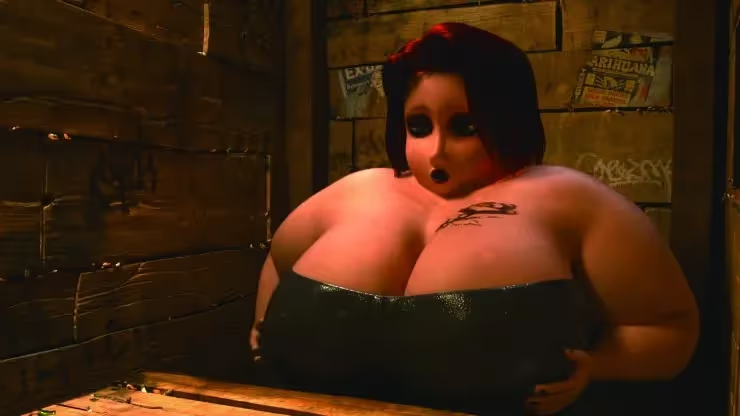
It was a true Rendering Nightmare for a 3D animation student – Kang Jin-Gyu. The ambitious graduation project he and his team took on would have taken more than six months to render using all of the school computers.
Kang Jin-Gyu has always dreamed of becoming a professional 3D artist which propelled him to make a full 3D animation short as his final graduation project. After a thoughtful consideration of available options and doing some research, he decided to give GarageFarm.NET a try. He liked the time and render farm costs, and most importantly, he was able to successfully finish the rendering before the deadline.
Kang Jin-Gyu felt compelled to share his experience with others so we talked a little about our farm, why he chose it, what are the benefits of using it, and, as a little bonus, how to use it.
If you are an aspiring filmmaker and you are new to cloud rendering, you will find this interview very helpful.
Here’s the interview.
Hello. I’m Kang Jin-Gyu, a 3D animation student. I was so busy with my graduation project this last 1 year that I wasn’t mentally all there.
I did my graduation project in full 3D animation.





Roughly it was this feeling…like these still shots. The team of three including me we did our best not to make it look like a student’s work. I really did my best to make it look good as I was aiming for a semi-realistic look. It naturally increased the render time exponentially though.
My hardware specs – CPU i7-5930k, 32GB RAM, GTX 970.
One frame on my hardware took about 1h 30m. The total length of the animation was 8 minutes at 24 frames per second. It would take 500 days to render it on one computer. Even if I used the school’s computers, it would take 6 months to render. Also, other students need to use the school’s render farm for their graduation work so I couldn’t.
So I decided to leave it up to an external render farm. I debated with team members of whether to go for it and use an online render farm, so we did some research. Most of the places where you can render online are overseas companies (outside of Korea), and the decent looking render farms were all ridiculously expensive. I could not afford it as a student. After looking around lots more I found posts on CG Dabang Cafe (Naver.com’s forums) about GarageFarm.NET, which had a very good reputation in Korea and was also the cheapest, and I contacted them. They kindly informed me about the price and how it works.
We were students and did not have much experience, so I asked lots of questions. Even though they must have been irritating, they kindly answered all of my questions. I felt really sorry to their support especially MinHee and Miki.
The Maya plugin usage was very easy. Even though when we contacted you initially Maya plugin was still in the beta stage, you would troubleshoot it while we were using it as soon as we got any issues. You upgraded the version a few times for us personally as our particular setup wasn’t compatible with your current farm configuration. We received 50 dollars credit to test the farm. After using this credit for a test and checking the images we proceeded to a full render (the tests are highly recommended to make necessary adjustments). Even the GI flickering in V-Ray can be auto-fixed using different GI modes. It was easy. Didn’t have to do any pre GI caching and mess around with adding baking to uploaded files. Could do it all together on the farm.
There are three priorities (high, medium, low) and each has a different rate (1, ½, ¼). We rendered mostly on medium because we were simply broke. Still, it made the render 10x faster than my PC. If it is not really urgent, I think it’s absolutely okay to render using medium and low. After using the initial credits I prepaid more. You can get the cost estimation using the website calculator, but also be sure to consult with the team. We did in 3 weeks (including testing, adjusting, fixing, rendering) on GarageFarm.NET what would have taken 500 days otherwise. Really fast and legit. You will understand if u try it.
There are videos on GarageFarm.NET YouTube channel how to use the farm but I’ll show u a little. After downloading RenderBeamer app and Maya plugin (or other plugins) you can upload the project folder and scene files.

After the installation, you’ll get the RenderBeamer shelf like above.

When you submit the scene file the optimizer window appears and you can choose to optimize. However, the optimizer could cause some issues with relinking certain assets, so first make sure you can use it on your scene.

Here you can see all missing textures file names, you can find them and relink them again or delete them altogether, then click proceed.

The project and all the source images needed in the scene are uploaded using RenderBeamer.

After uploading is completed, you’ll get the link that takes you to Web Manager (online dashboard)

You can check your settings and select your priority level here.

This shows 2 jobs in progress – GI caching and full render. After the GI caching job finishes the full render starts. All rendered frames are downloaded automatically to your PC.
GarageFarm.NET was a great help for our grad project and we wouldn’t be able to do it without them. I hope I can promote their render farm so that other people who stress about long render times and don’t know what to do can use this information.